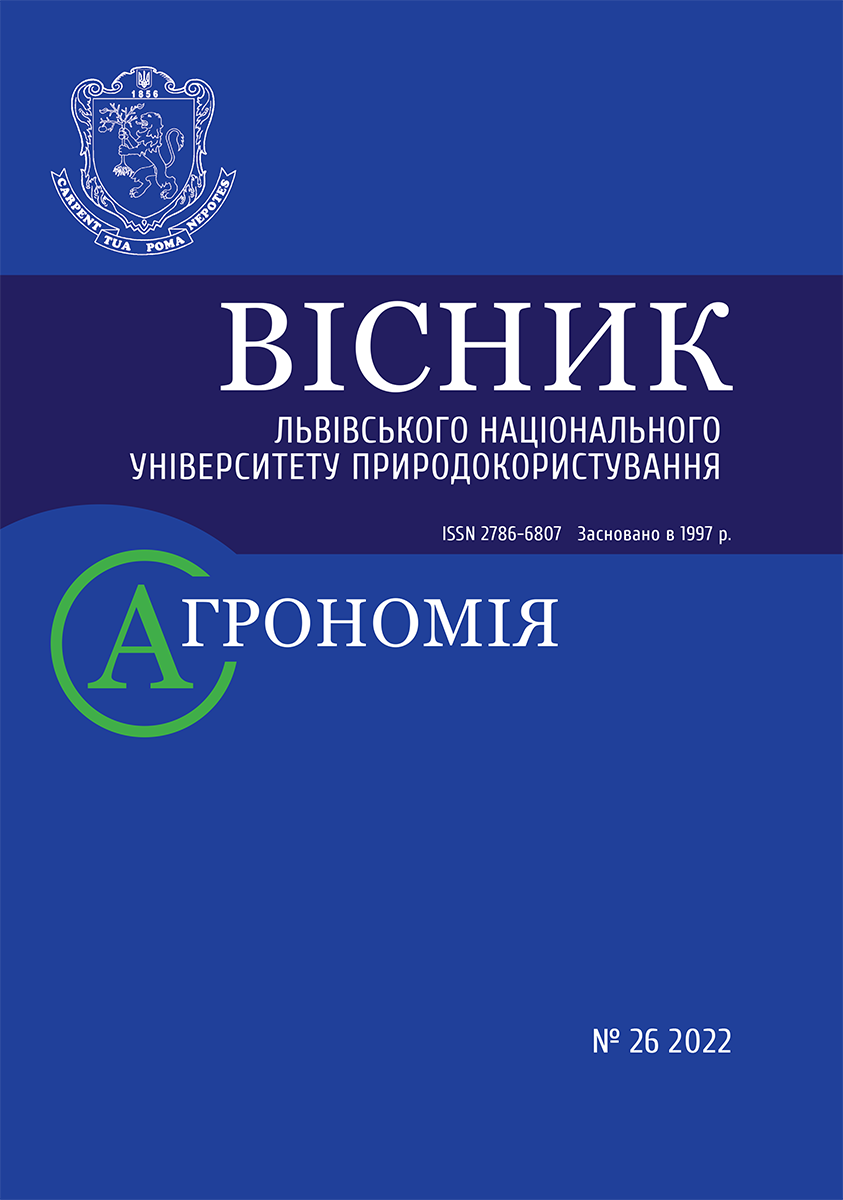ECOLOGICAL RISKS OF PESTICIDE CONTAMINATION OF RUDERAL AND CULTURAL BIOGEOCENOSES
DOI:
https://doi.org/10.31734/agronomy2022.26.038Keywords:
ecotoxicants, translocation, bioaccumulation, transformation, soil, plantsAbstract
Attention is focused on the fact that the urgent task of protecting the environment today is to prevent the threat of ecological risks at the first stage of minimizing possible negative consequences. The article is devoted to the solution of the actual problem of anthropogenic contamination with toxicants of the territories adjacent to the warehouses of agrochemicals, caused by the localization and translocation of pesticide residues in the components of agrobiogeocenoses. Ecological aspects of hazard risk assessment are analyzed on a scientific basis, which will allow to reveal the consequences of anthropogenic load on the environment at the local level. Pesticide residues are potent ecotoxicants, and some are very persistent in natural environments, able to migrate through food chains much faster than heavy metals. Therefore, the consequences of their entry into biogeocenoses are dangerous, since many of them are stable and labile.
The studies have shown that despite the obtained low values of translocation coefficients, perennial plants are able to grow in conditions of phytotoxicity of the soil and accumulate significant quantities of DDT and its metabolites in root tissues. The obtained results confirm existence of a certain physiological barrier to the accumulation of ecotoxicants from the soil by plants and the dependence of such accumulation on the species characteristics of plants. The lowest indicators of pesticide content were obtained for common yarrow, where the minimum concentrations of DDT were found in aerial organs – 18.1 mg/kg, and in the root system – 404.6 mg/kg, and high amounts were investigated in wormwood, which with DDT content in the soil of the rhizosphere was 1642.8 mg/kg (16,4 MPC), the pesticide accumulated in the aerial organs of plants at a concentration of 1898.4 mg/kg based on the dry weight of plants, and its root system – 1846.2 mg/kg.
The processes of translocation and transformation of organochlorine pesticides are investigated in the article and and regularities of distribution of pesticides in the vegetative organs of spring barley were determined. The experiment was conducted on dark grey podzolized soils in the conditions of the Western Forest-Steppe of Ukraine and showed that biological accumulation of DDT residues in the vegetative mass of spring barley plants depends not only on biological features of culture, but also on the initial concentration in rhizosphere soil.
References
Assessment of ecological risks in the zones of influence of toxic chemical compounds / L. I. Mokliachuk, I. M. Horodyska, V. V. Monarkh, O. M. Mokliachuk, T. O. Mokliachuk. Balanced environmental management: science-method. journal. 2017. No 3. P. 145–150.
Barley / V. Lykhochvor, R. Prots, Ya. Dolezhal. Lviv: Ukr. technologies, 2003. 88 p.
Ecological risks of contamination of agricultural products with unsuitable pesticides / I. M. Horodyska, V. V. Monarch, T. O. Moklyachuk et. al. Balanced nature management. 2013. No 4. P. 17–22.
Ecotoxicology: study guide / V. V. Snitinskyi, P. R. Khirivskyi, P. S. Hnativ, Yu. Ya. Korynets, N. E. Panas / 2nd ed., add. and processing. Kherson: Oldiplus, 2019. 396 p.
Frolov M. O. Legal aspects of environmental risk: Dissertation ... Sc.J.: 12.00.06. Kyiv, 2000. P. 21–22.
Interdyscyplinarne Influence of nutrient amendments on the phytoextraction of weathered 2,2-bis(p-chlorophenyl)-1,1-dichloroethylene by cucurbits / J. C. White, Z. D. Parrish, M. Isleyen, M. P. Gent, W. Iannucci-Berger, B. D. Eitzer, M. I. Mattina. Environmental Toxicology and Chemistry. 2005. Vol. 24, No 4. Р. 987–994.
Ivankiv M. Ya., Ohorodnyk N. Z., Balkovskyi V. V., Pavkovych S. Ya., Vovk S. O., Horodyska I. M. Study of the species composition of the phytocenosis of territories adjacent to agrochemical warehouses. Bulletin of Lviv National Agrarian University: agronomy. 2018. No 22 (2). P. 20–24.
Ivankiv M. Ya., Vovk S. O., Balkovskyi V. V., Kruzhel B. B., Pavkovych S. Ya. Peculiarities of migration and accumulation of organochlorine pollutants in the soil. Bulletin of the Lviv National Agrarian University: agronomy. 2016. No 20. P. 18–22.
Ivankiv M. Ya., Vovk S. O., Balkovskyi V. V., Pavkovych S. Ya. Peculiarities of the transformation of persistent organic pollutants in the soil. Bulletin of Lviv National Agrarian University: agronomy. 2017. No 27. P. 24–30.
Modeling the migration of ecotoxicants in the components of the agroecosystem / V. M. Voitsitskyi, S. V. Khyzhniak, V. V. Danchuk et al. Agroecological journal. 2019. No 1. P. 36–42. URL: http://journalagroeco.org.ua/article/view/163246. (Accessed 20 April 2022)
Mokliachuk T. O. Methods of environmental risk assessment from contamination with persistent pesticides. Balanced nature management. 2014. No 2. P. 135–142.
Monarkh V. V. Assessment of environmental risks of pesticide contamination of agroecosystem components. Balanced nature management. 2014. No 1. P. 206–212.
Monitoring and land protection. Workshop: study guide / V. S. Moshynskyi, T. V. Bukhalska, A. H. Lishchynskyi, Zh. V. Nakonechna. View. 2nd, revision. and additional Rivne: NUVHP, 2019. 202 p.
Ridei N. M., Strokal V. P., Rybalko Yu. V. Ecological assessment of agrobiocenoses: theory, methodology, practice. Kherson: Oldi-plus Publishing House, 2011. 568 p.
Rudakov D. V. Mathematical models in environmental protection: Training manual. Dnipropetrovsk: Publishing House of Dnipropetr. University, 2004. 160 p.
Voitsitskyi V. M., Khyzhniak S. V., Danchuk V. V., Ushkalov V. O. Reliability of agroecosystems: approaches to its assessment and improvement. Taurian scientific bulletin: agricultural sciences. Kherson: «Helvetica», 2021. Vol. 118. С. 327-333.
Voitsitskyi V. M., Khizhnyak S. V., Konopolskyi O. P. Forecasting processes of migration and accumulation of pollutants by agroecosystems. Tavria Scientific Bulletin. 2020. No 115. Р. 270–277.
Zhukov O. V. Ecomorphic analysis of consortia of soil animals: monograph. Dnipropetrovsk: Publishing house «Svidler A. L.», 2009. 239 p.


